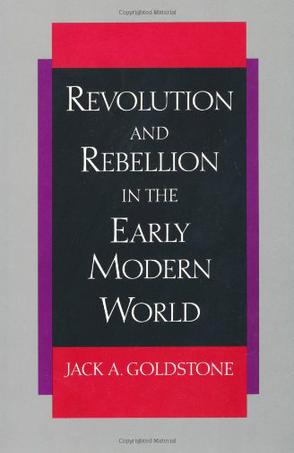-

西欧新社会运动-比较分析
一向热爱“革命”的欧洲人正在做什么?新的“革命”运动是否正在酝酿?本书比较了瑞士、德国、荷兰、法国四国的新社会运动的社会、民族、文化背景和现实动因,以四国主要报刊的新闻报道为基础进行比较分析。其中特别关注的是反核、同性恋和城市自治等运动。对我们考察研究西欧资本主义社会政治和国家行政等问题具有参考价值,也可从中了解20世纪下半叶西欧社会民主运动的大体状况,感受其随时代的变化。 -

Peasant Wars of the Twentieth Century
-

自由之夏
「每一天發生的每樣事對我來說都是全新的。資訊不斷轟炸著我,經驗不斷轟炸著我……而我衰微的精神狀態幾乎要失控了。」 「你感覺自己將參與這歷史性一刻;在一區域中,整體生活模式裡很深刻的某項東西即將要轉變……你正在……創造……歷史。從某些方面來看是全然無私無我的,但(你)也同時發現了自我。」 「它讓我欣喜若狂……第一次這些片段碎塊嵌合在一塊……感覺像我自己……我認為透過它,我們不但成就了些事,也是實現我個人的救贖。」 「它是我人生中最長的夢魘:三個月──一九六四年的六月、七月、八月。」 本書即是詳述這個撼動美國六○年代,歷時不到三個月的「自由之夏」運動(Freedom Summer)。這段期間,超過一千人聚集至美國密西西比州,共同居住在「自由之家」,或寄住在當地不懼種族隔離主義者威脅的黑人家庭中。計劃期間,難以緩解的恐懼、令人苦惱的貧困,以及間或發生的暴力事件,都困擾計劃的進行,最後造成四位自願者被毆打致死、八十位自願者受傷、一百位自願者被逮捕,並有六十七間教堂、房屋及商店被砸毀或焚燒。這個夏天是每位參與者心中難以磨滅的經驗,他們的生命被改變,進而撼動整個世代。 「自由之夏」是美國社運的重要轉捩點,透過它所引發的文化與政治效應,孕生了日後其他重要運動,包括女權運動、反戰運動、學生運動等。自由之夏不僅為六○年代眾多行動主義的嘗試提供了組織基礎,同時也關鍵性地推動這個時代茁生的反文化思潮發展。 -

Social Movements and Networks
For the first time in a single volume, leading social movement researchers map the full range of applications of network concepts and tools to their field of inquiry. They illustrate how networks affect individual contributions to collective action in both democratic and non-democratic organizations; how patterns of inter-organizational linkages affect the circulation of resources both within movement milieus and between movement organizations and the political system; how network concepts and techniques may improve our grasp of the relationship between movements and elites, of the configuration of alliance and conflict structures, of the clustering of episodes of contention in protest cycles.Social Movements and Networks casts new light on our understanding of social movements and cognate social and political processes. -

East Asian Social Movements
In the study of civil society and social movements, most cases are based in Western Europe and North America. These two areas of the world have similar histories and political ideals and structures in common which in turn, affect the structure of its civil society. In studying civil society in Asia, a different understanding of history, politics, and society is needed. The region’s long traditions of centralized, authoritarian states buttressed by Confucian and in some cases Communist ideologies may render this concept irrelevant. The chapters in this international volume cover most of the areas and countries traditionally defined as belonging to East Asia: Japan, Taiwan, South Korea, Hong Kong, Singapore and China. The case studies included in this volume confront the utility of using the Western concept of civil society, represented in its most active form – social movements – to think about East Asia popular politics. Along with providing an array of important case studies of social movements in East Asia, the introduction, chapters and conclusion in the book take up three major theoretical questions: the effect of the East Asian cultural, social and institutional context upon the mobilization, activities and outcomes of social movements in that region, the role of social movements in larger transformative processes, utility of Western social movement concepts in explaining social movements in East Asia. This book will be of interest to two major groups of readers, those who study East Asia and those who pursue social movements and civil society, as well as politics more generally. From the Back Cover In the study of civil society and social movements, most cases are based in Western Europe and North America. These two areas of the world have similar histories and political ideals and structures in common which in turn, affect the structure of its civil society. In studying civil society in Asia, a different understanding of history, politics, and society is needed. The region’s long traditions of centralized, authoritarian states buttressed by Confucian and in some cases Communist ideologies may render this concept irrelevant. The chapters in this international volume cover most of the areas and countries traditionally defined as belonging to East Asia: Japan, Taiwan, South Korea, Hong Kong, Singapore and China. The case studies included in this volume confront the utility of using the Western concept of civil society, represented in its most active form – social movements – to think about East Asia popular politics. Along with providing an array of important case studies of social movements in East Asia, the introduction, chapters and conclusion in the book take up three major theoretical questions: the effect of the East Asian cultural, social and institutional context upon the mobilization, activities and outcomes of social movements in that region the role of social movements in larger transformative processes utility of Western social movement concepts in explaining social movements in East Asia. This book will be of interest to two major groups of readers, those who study East Asia and those who pursue social movements and civil society, as well as politics more generally. -

Revolution and Rebellion in the Early Modern World
What can the great crises of the past teach us about contemporary revolutions? Arguing from an exciting and original perspective, Goldstone suggests that great revolutions were the product of 'ecological crises' that occurred when inflexible political, economic, and social institutions were overwhelmed by the cumulative pressure of population growth on limited available resources. Moreover, he contends that the causes of the great revolutions of Europe--the English and French revolutions--were similar to those of the great rebellions of Asia, which shattered dynasties in Ottoman Turkey, China, and Japan. The author observes that revolutions and rebellions have more often produced a crushing state orthodoxy than liberal institutions, leading to the conclusion that perhaps it is vain to expect revolution to bring democracy and economic progress. Instead, contends Goldstone, the path to these goals must begin with respect for individual liberty rather than authoritarian movements of 'national liberation.' Arguing that the threat of revolution is still with us, Goldstone urges us to heed the lessons of the past. He sees in the United States a repetition of the behavior patterns that have led to internal decay and international decline in the past, a situation calling for new leadership and careful attention to the balance between our consumption and our resources. Meticulously researched, forcefully argued, and strikingly original, Revolutions and Rebellions in the Early Modern World is a tour de force by a brilliant young scholar. It is a book that will surely engender much discussion and debate.